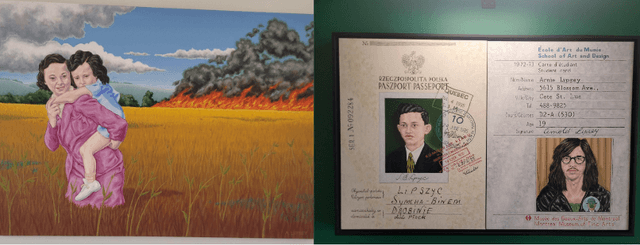The history of Jewish film is nearly as long as the history of cinema itself. Jews arguably created Hollywood. Many of the early directors, actors, and virtually all of the crew were Jews. Though no definitive list of these key characteristics can ever be written, a quintessentially Jewish film can be reliably identified by its warmth and distinctly oppositional approach to humour.
Gary Beitel’s filmmaking is exemplary of the warmth in Jewish cinema. Beitel is a documentarian and a professor of Jewish Studies at McGill. He finds his Judaism inseparable from his work, saying, “I can’t avoid the fact that I speak through a Jewish voice, through a Jewish lens.”
Beitel’s documentary Chez Schwartz, chronicling Montreal’s famous Schwartz’s Deli, exemplifies how his Jewish lens leads to feelings of warmth in his film. The film is entirely uninterested in the restaurant itself—Beitel instead chooses to focus the movie on the people who normally would not be given a voice in film, those who work and eat there. Focusing on the human side of this environment rather than the near-mythical restaurant itself fosters the intrinsically Jewish warmth around good community and good food.
These warm feelings are equally hard to ignore in the 1974 documentary Yudie, directed by Mirra Bank. The film follows the titular Yudie, a caring, friendly and funny elderly Jewish woman as she goes about her day in New York City. The filmmaker’s approach to Yudie exudes a clearly deep care for the subject. The movie gives Yudie space to ramble about her life, passions, and family. Just like how Beital approached Chez Schwartz, Bank approaches Yudie from a perspective that allows for the warmth present in all people to shine through. This dedication to the human is distinctive of Jewish films, whether they be documentaries or features.
Humour is perhaps even more characteristic of Jewish film than warmth. Jewish films often construct comedic situations through Jews coming up against the rigidity of White Anglo-Saxon Protestant (WASPs) culture. This contrast combines with self-deprecation to form the essential Jewish comic style. This unique style of humour is often derived from experiences of discrimination and minoritization. Beitel explains how discrimination has affected his film making: “I have the experience of having grown up as the child of Holocaust survivors…so the issue of the relationship between minorities and dominant culture is something that's preoccupied me in much of my work.”
Many Jewish filmmakers, like Mel Brooks, have used this comic structure to great effect. In Hal Ashby’s 1971 cult-classic Harold and Maude, these touchstones of Jewish comic sensibilities are at their best. The film follows young WASP Harold as he begins an affair with elderly Holocaust survivor Maude. Harold and Maude create comic moments by contrasting Harold’s uptightness and his family’s expectations with the freedom of Jewish culture that Maude represents. The film’s humour does not shy away from taking some shots at Maude as well, avoiding insinuations of cultural superiority. As in the best of Jewish films, Harold and Maude’s humour is critical in equal opportunity. It showcases how comedy in Jewish film is a tool to ridicule both the dominant culture and Jews, themselves.
Cinema has always been tied to Judaism, a link that has greatly influenced the development of Jewish film practices. These practices transcend ethnic identity: After all, Hal Ashby is a gentile, yet Harold and Maude remains a very Jewish film. Jewish cinematic styles and tendencies have been picked up by filmmakers of all ethnicities. Jews no longer dominate the movie industry, yet their approaches to film have remained and will continue to be used by generations to come.
Powered by Froala Editor






